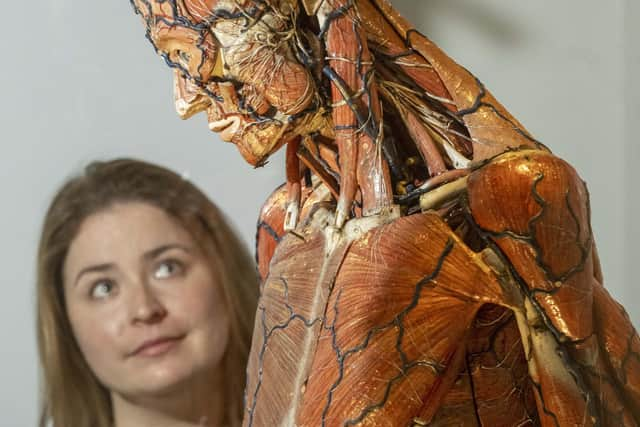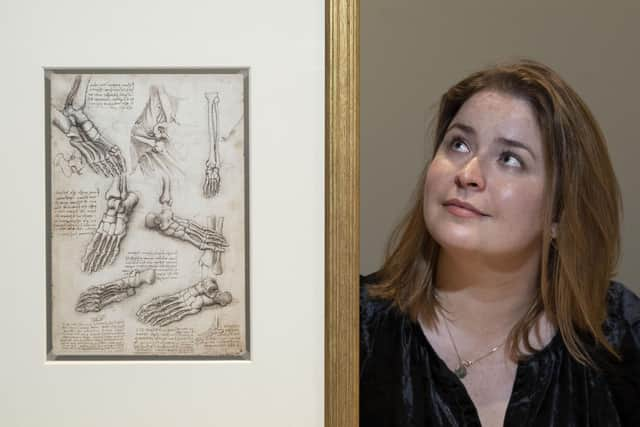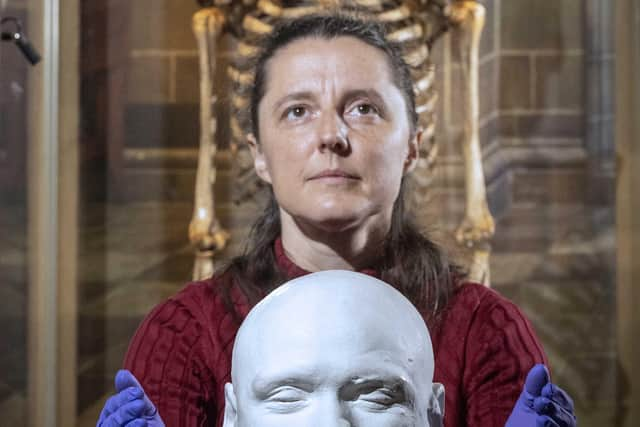Da Vinci drawings go on display in Edinburgh as exhibition explores history of anatomy
and live on Freeview channel 276
Sketches created by the Italian artist during dissections of more than 30 human corpses in the 16th century are among the star attractions in a new show at the National Museum of Scotland, which opens on Saturday.
Anatomy: A Matter of Death and Life covers how Da Vinci’s work would have transformed knowledge and understanding of anatomy, but remained almost unknown until around 1900.
Advertisement
Hide AdAdvertisement
Hide AdThe exhibition recalls how Edinburgh’s growing reputation as a centre of excellence for studying anatomy led to demand for bodies outstripping supply in the centre and leading to widespread problems with “grave robbing” and bodysnatching.


Much of the show, which features a coffin and a “mortsafe” designed to deter graverobbers, focuses on the infamous 19th-century murderers William Burke and William Hare, who claimed 16 victims whose bodies were sold to the Edinburgh anatomy lecturer Robert Knox.
It recalls how Hare evaded justice after agreeing to give evidence against his accomplice, who was executed in the Lawnmaket before more than 20,000 onlookers.
Among the objects in the exhibition are “life masks” of Burke and Hare, which were taken after the pair had been arrested, court papers from the trial of Burke and his wife Helen, who was found not proven, and a written confession by Burke, penned before he was hung and dissected himself.
Advertisement
Hide AdAdvertisement
Hide AdThe exhibition explores how anatomy lecturers competed for students amid increasing demand for “hands-on” experiences of dissections in classes. A petition signed by nearly 250 Edinburgh University medical students calling for more bodies to be made available is among the objects on display.


Others include a uniform of the Edinburgh Old Town Guard at the height of the city’s “bodysnatching" problems and a model of a watchtower built to deter grave robbers for St Cuthbert’s Kirkyard in the west end.
Other highlights include a full-body anatomical model by pioneering French anatomist and model maker Louis Auzoux, and drawings and paintings depicting some of the earliest anatomy lecturers around Europe, and centuries-old surgical instruments.
The exhibition, which runs until October 30, demonstrates how the history of medical study in Edinburgh can be traced almost to the doorstep of the museum.
Advertisement
Hide AdAdvertisement
Hide AdDr Ailsa Hutton, curator of modern and rural history, said: “We really wanted to create a real sense of Edinburgh with the exhibition as so much of the story that we are telling happened very short distances away.


“Edinburgh gradually became such a centre for learning and anatomy was quite a central part of that. But as demand for anatomy classes grew, so did the demand for bodies to dissect.
“The exhibition looks at how common it became for anatomists to acquire bodies from grave robbers and how it led to nightwatchmen being employed and watchtowers being built in graveyards. some of which can still be seen in the city to this day.”
Dr Tacye Phillipson, senior curator of modern science, said: “Anatomical knowledge is crucial to medicine, and Edinburgh was a key centre for medical teaching and the development of modern medicine.
“However, this work relied on the dissection of bodies, the sourcing of which was often controversial and distressing.”
Comment Guidelines
National World encourages reader discussion on our stories. User feedback, insights and back-and-forth exchanges add a rich layer of context to reporting. Please review our Community Guidelines before commenting.
